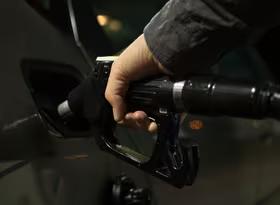The Clean Car Discount’s unequal distribution
The Clean Car Discount is now in full swing, with rebates on ‘clean cars’ reaching up to $8,625 for new electric vehicles while the heaviest polluters face a maximum penalty of $5,175. There has already been a shift in the number of cleaner cars being purchased, particularly for electric vehicles. However, due to the price point of many electric vehicles, availability of charging infrastructure, and the models not suiting primary sector and trade services there has been a certain cohort that has benefitted from the Clean Car Discount so far. This article explores where in New Zealand the Clean Car Discount has had the most effect and why that is.
Clean Car Discount encourages growing EV trend
There has been a strong increase in electric vehicle purchases associated with the Clean Car Discount with the share of first-time vehicle registrations growing to 5.5% in 2022 for the year so far. For the same period last year this share was only 2.5% of first-time registrations. Looking at where electric vehicles are being registered around the country you can see there is generally a much stronger uptake in urban centers.
Wellington is the region with the largest share of electric vehicles as a percentage of first-time registrations. Since the introduction of the Clean Car Discount in July 8.8% of first-time registrations in Wellington were of electric vehicles, growing from 4.0% in the first half of 2021 before the Clean Car Discount was introduced (see Chart 1). The next regions with the largest share of electric vehicles are Northland and Auckland, sitting at 6.5% and 6.0% respectively since July 2021. The three regions with the lowest share of electric vehicles entering their fleets are Gisborne, West Coast and Southland, where electric vehicles represent less than 2.0% of first-time registrations since the introduction of the Clean Car Discount. This is unsurprising considering these are largely rural regions with lower-than-average annual earnings. Electric vehicles currently on the market tend to be relatively expensive and don’t meet the needs of rural households and businesses as well and diesel and petrol vehicles do.
Breaking the data down to territorial authorities, Wellington City comes out the most popular area for electric vehicles (see Chart 2). Wellington City is followed by three districts close by, including Kapiti, South Wairarapa, and Carterton districts. Other territorial authorities with a high share of electric vehicle uptake tend to be either cities or districts close to cities. Queenstown-Lakes is one exception, potentially reflecting pockets of higher wealth being better placed to afford electric vehicles.
It is also worth noting that the effect of the Clean Car Discount has been most pronounced in areas where electric vehicles were already relatively popular before the policy. For example, there has been a 4.7 percentage point increase in the share of electric vehicle entering the fleet in Wellington, compared with a 0.8 percentage point increase in Gisborne.
Hybrid vehicles favoured after rebate inclusions
For plug-in hybrid vehicles there has been a similar trend in uptake by region since the introduction of the Clean Car Discount (see Chart 3). In April, the share of hybrid vehicles grew to 44% (including non-plug-in hybrids), since the Clean Car Discount encompassed a larger range of vehicles that receive the subsidy. For comparison, hybrids made up just 17% of first-time registrations in April 2021. Hybrid vehicles will help bridge the transition between internal combustion engines and pure electric vehicles as they offer models that will fill niches in the market.
The Clean Car Discount is working to increase the uptake of electric vehicles and other cleaner cars. This trend was already happening before the policy came into effect. By our estimates we think the Clean Car Discount has brought forward the adoption of electric vehicles by about 2-3 years, based on the price reduction we would expect in a few years’ time and the value of the rebate. What has become obvious however is that the rebate of this policy has generally ended up in the hands of wealthier urbanites. Over time as the price of electric vehicles fall to more affordable levels the rebate will benefit ordinary buyers as well.












